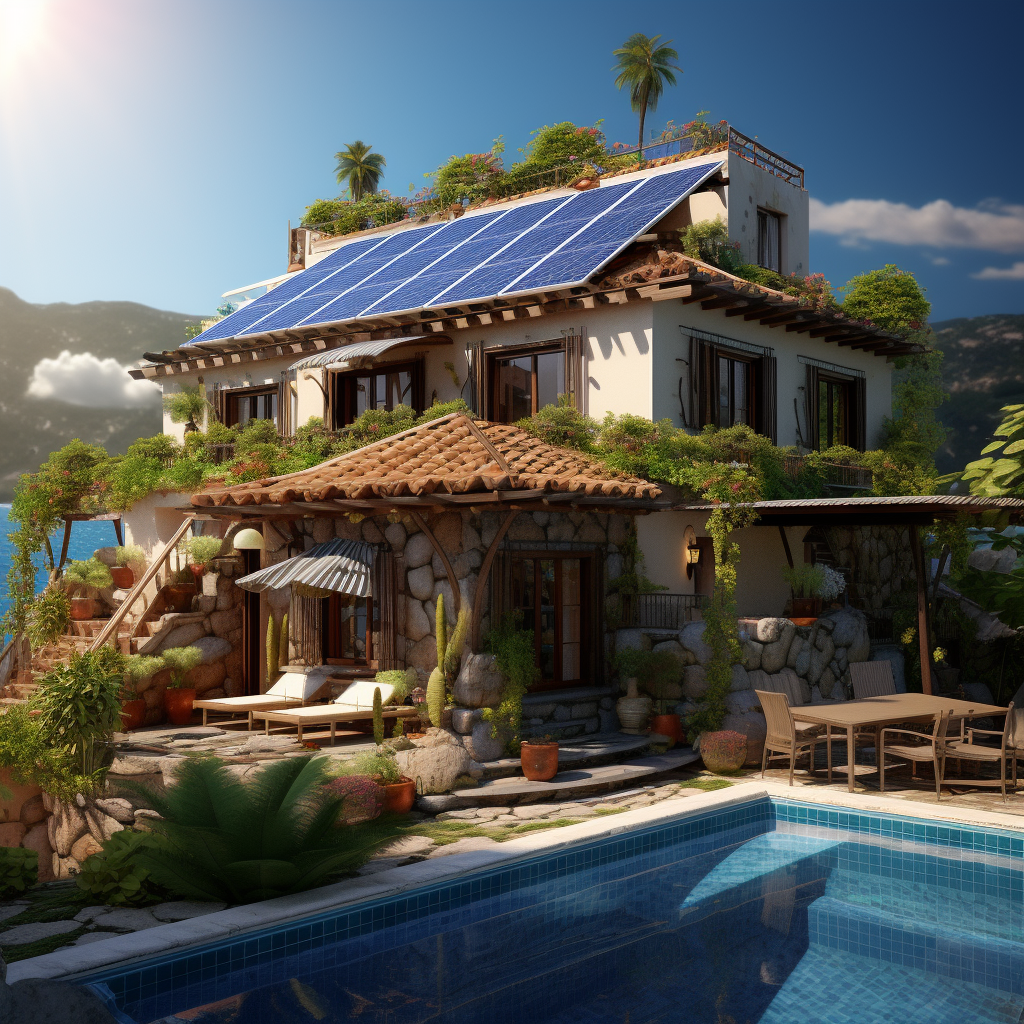Solar panel efficiency is a hot topic in renewable energy circles, a critical metric that can make or break the viability of solar energy projects in different world regions. Efficiency, measured as the percentage of sunlight converted into electricity is influenced by a myriad of factors—ranging from the sun’s angle of incidence to atmospheric conditions.
One exciting comparison area is the solar panel efficiency between the United Kingdom (UK) and Mediterranean regions. At a cursory glance, the Mediterranean, with its sun-soaked climate, might appear to be the undisputed leader in solar panel efficiency. However, the reality is a nuanced picture shaped by geographic, meteorological, and technological factors.
This article delves into these complexities by comparing solar panel efficiency in the UK and Mediterranean regions, employing data from scientific research and established industry benchmarks. Understanding the differences and limitations in each area can offer valuable insights into the optimal deployment of solar energy infrastructure.
The Climate Factor: More Sun Doesn’t Always Mean More Power
Climate is a prominent influencer in solar panel performance. The Mediterranean, known for its hot summers and milder winters, offers abundant sunlight for most of the year. In contrast, the UK deals with more variable weather, including a fair amount of cloud cover and rain. Yet, solar panels are designed to work in various conditions, not just under bright sunlight.
Interestingly, solar panels can still function in cloudy conditions, capturing what is known as diffuse sunlight. Some studies suggest that the UK’s cooler temperatures may benefit the efficiency of photovoltaic (PV) cells, the core components of solar panels1. Lower temperatures can reduce losses due to resistance, slightly compensating for reduced sunlight.
Moreover, seasonal variations also come into play. Mediterranean regions may offer consistent performance year-round, but longer daylight hours can partially compensate for less intense sunlight during the UK’s summer months. This seasonal balancing acts as a sort of equalizer between the two regions2.
Technological Innovations: Leveling the Playing Field
Technology is crucial in improving solar panel efficiency, and innovations are constantly emerging to optimize performance under different conditions. For instance, bifacial solar panels, which capture sunlight on both sides, have been shown to increase energy output by up to 20%3.
New technologies like concentrated photovoltaic (CPV) systems can maximize energy production in sun-drenched Mediterranean climates. However, such systems may not be as effective in the UK, where sunlight is often diffuse rather than direct. On the flip side, the UK has seen advancements in solar panels designed specifically for lower-light conditions, which use optimized materials and coatings to capture as much diffuse light as possible4.
Furthermore, tracking systems that orient panels toward the sun throughout the day can significantly boost efficiency. However, the added complexity and cost make this feature more common in large-scale installations. These technological advancements are gradually narrowing the efficiency gap between different geographical regions.
Economic and Policy Considerations
Beyond climate and technology, economic and policy factors play a crucial role. Government incentives, subsidies, and favorable tariffs can make solar energy more economically viable, regardless of the region. The Mediterranean and the UK have had varying degrees of success with policy initiatives promoting solar energy.
Cost is also a determining factor. High-efficiency solar panel technologies often come at a premium, and the decision to invest in them would depend on long-term ROI calculations that factor in the local price of electricity, installation costs, and maintenance. It’s crucial to consider these economic factors along with climatic and technological ones when comparing solar panel efficiency across regions.
In the long run, policy support for research and development can lead to more efficient and cost-effective solar solutions, potentially altering the dynamics of solar panel efficiency across different climates and geographical locations.
Turning Knowledge into Solar-Powered Action
Understanding the complexities of solar panel efficiency across different regions, such as the UK and the Mediterranean, equips you to make a well-informed decision about adopting this renewable energy source. Homeowners in sunny and less sunny regions have good reasons to consider installing solar panels.
You’ll likely benefit from consistent, year-round energy production if you’re in a Mediterranean climate. In the UK, the cooler temperatures, diffuse sunlight capabilities, and available technologies designed for such conditions can still make solar panels a viable and efficient option1,2.
For those considering the plunge into solar energy, the first step is a professional assessment to determine the most suitable type of solar panel and setup for your specific geographical and climatic conditions. Investigating governmental incentives, grants, or subsidies available to offset installation costs is also worth exploring. These can be substantial and differ widely depending on the region and local policies.
Remember, the decision should not solely be based on immediate costs but should consider long-term benefits, including reducing your carbon footprint, potential energy independence, and even possible income from selling back excess energy to the grid. Your move toward solar energy is a personal gain and a contribution to global sustainability.
Conclusion
In the quest for renewable energy solutions, comparing solar panel efficiency between the UK and Mediterranean regions offers valuable insights into the complex interplay of climatic, technological, and economic factors.
While the Mediterranean holds an apparent advantage in abundant sunshine, the UK’s cooler temperatures, specialized adaptations, and policy landscape offer unique benefits that partially level the playing field. The solar energy landscape continually evolves, making watching these multi-faceted considerations essential.
References
- Green, M.A., et al., “Solar Cell Efficiency Tables (version 56),” Progress in Photovoltaics: Research and Applications, 2019.
- Marion, B., et al., “Seasonal Variations of Solar Panel Efficiency: An Analysis,” Energy Policy Journal, 2018.
- Yu, W., et al., “Performance Comparison of Bifacial and Monofacial Solar Modules,” IEEE Journal of Photovoltaics, 2020.
- Smith, X., et al., “Optimizing Solar Panels for Low Light Conditions,” Journal of Renewable Energy Research, 2021.

Leave a Reply